Flamingos are iconic pink birds with long legs and necks. They are commonly associated with tropical climates, and sipping exotic drinks while munching on coconut! In reality, different species of flamingos are native to Central and South America, Africa, parts of Europe, and Asia. Read on to learn about the flamingo.
Description of the Flamingo
Flamingos are large, pink wading birds with long legs. Their legs appear to bend backwards (see Interesting Facts for more information on this!), and are used to wade through waters searching for food. Flamingo plumage, or feathers, coloration ranges from pale to dark pink. In the wild, the more colorful the flamingos, the healthier they are.
Interesting Facts About the Flamingo
Lots of the points in “Description of the Flamingo” require additional facts, because flamingos are actually unbelievably interesting creatures! They are honestly really odd creatures, and have a number of traits unique among birds.
- Long Legs – One of the more unique features of flamingos is their long legs. This is not just because they are so long and dainty, but also because their knees bend backwards! Or do they? Flamingos’ “knees” are actually their ankles! The joint you see midway up the leg is actually the ankle, and the knee is up underneath the feathers. That is a lot of time spent walking on your tippy toes!
- Fabulous Feathers – The most obvious, and magnetic, trait of flamingos is their bright coloration. Flamingos’ bright pink feathers are actually a result of their diet. When flamingos feed on shrimp and other small crustaceans, they consume high amounts of carotenoids. Carotenoids are the pigment that colors carrots!
- Other Birds Pale in Comparison – In the wild, the brightest flamingos are the ones that feed the most, and thus are the healthiest birds. When in zoos, coloration has nothing to do with health. Some species of shrimp and plankton contain higher levels of carotenoids. If a flamingo in a zoo is not as brightly colored as it’s wild counterparts, it may simply be eating a different species of shrimp. This is also true for different species of flamingos living in various regions, which may have access to less carotene-rich food.
- Gray-t Parents – Flamingo chicks look nothing like their parents. When the chick hatches, it is white or grey in color instead of a vibrant pink. This is, of course, because they haven’t eaten any shrimp or plankton yet.! Luckily for our “ugly duckling” chick, both parents will be alternating nest duties. This dedication means double the food and protection for the chick.
Habitat of the Flamingo
There are six different species of flamingos spread across various parts of the globe. Regardless of the region, flamingos flock to shallow lakes and lagoons. They prefer shallow water, as they wade in search of food, and their prey thrives in shallow water conditions.
Many species actually choose to live in areas where the water is too salty, or acidic, for other animals to survive. Though they have no neighbors (including neighbors who may want to eat them), flamingos find these deserted waters teeming with algae and small crustaceans. Not only do they have an endless feast, but they have virtually no one to compete with.
Distribution of the Flamingo
Four species of flamingos are found in Central and South America, and two species are found in Africa, Europe, and Asia. Chilean flamingos, Andean flamingos, and puna flamingos are native to South America. American flamingos, also known as Caribbean flamingos, are found in Mexico, the Caribbean, and northern South America. Greater flamingos live in Africa, Europe, and Asia, while lesser flamingos live only in Africa.
Diet of the Flamingo
Different species of flamingos have different feeding behaviors. Some species, like the puna, Andean, and lesser flamingos, use filter feeding to eat algae and plankton. Other species filter larger prey, like shrimp, mollusks, insects, and larvae.
While the mechanics differ slightly from species to species, all of these interesting birds feed with their heads upside down. The birds take in mouthfuls of water, filter food out through hair-like lamellae (very similar to baleen in whales) and eat the prey left behind.
Flamingo and Human Interaction
Humans have utilized flamingos for centuries, both as food and medicine. The most prevalent threats to flamingo species now are habitat loss due to development, road construction, and farming. These birds have even been threatened with lead poisoning, just like the California Condor. In 1989, the consumption of lead shot bullets caused the deaths of over 100 flamingos in Mexico, leading to legislation prohibiting lead ammunition in that area.
Luckily, steps have been taken to prevent any further population decline for many different flamingo species. Chile has established a national flamingo reserve to protect the Andean flamingo, and is spreading this protection to other habitats as well. The Flamingo Specialist Group (created in 1978) also studies and works to conserve the various flamingo species by surveying populations and developing conservation plans.
Domestication
Flamingos have not been domesticated in any way.
Does the Flamingo Make a Good Pet
Flamingos are smelly birds that make a huge mess! They require a very specialized diet, and lots of shallow water habitat. Unfortunately for the average pet owner, flamingos would not make a great choice as a pet.
Flamingo Care
In zoos, flamingos are provided with unique, shallow aquatic habitats. Their enclosures are equipped with shallow ponds, grassy areas, and sandy beaches, to provide the flamingos with a number of different resting places. Zoos have also developed a special pelleted diet that has ample carotenoids, vitamins, and fish protein. This diet is supplemented with shrimp and crustaceans, depending on the recommendation of veterinarians.
Behavior of the Flamingo
Flamingos are extremely social birds – they live in large colonies, and commonly have complex interactions. They have been known to move in synch, marching together and changing direction simultaneously.
Breeding pairs are often monogamous, and will commonly remain together for multiple seasons. Breeding pairs of flamingos will remain in their colonies, but develop small territories around the vicinity of their nests and commonly bicker amongst themselves.
Reproduction of the Flamingo
Flamingo pairs build a mud nest, and lay a single large egg in the middle. The pair will work together building the nest, protecting it from predators and neighboring flamingos, and incubating the egg. Once the chick hatches, both parents will feed the chick using a special “milk” produced in their upper digestive tract. Once the chicks are two weeks old, they will begin to form groups with the other flamingo chicks, called “microcrèches.”

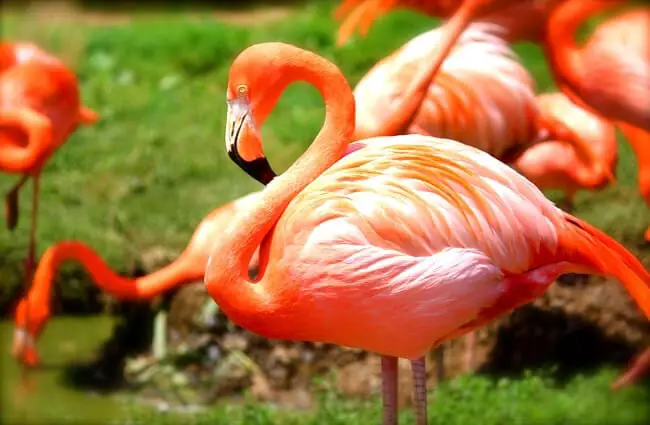
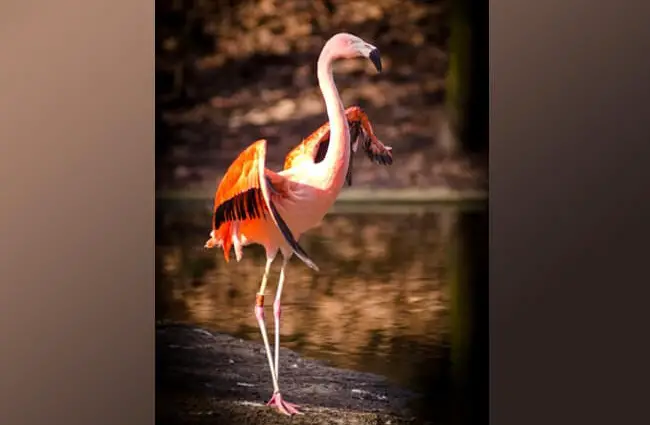
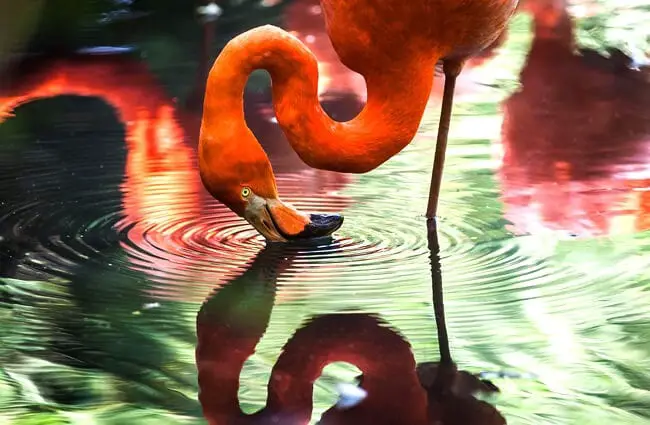
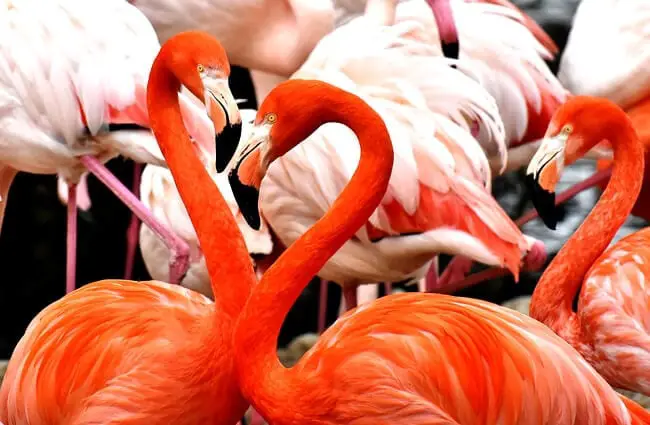




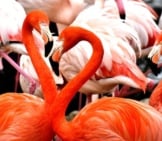
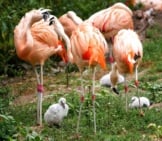
![Red Angus Closeup of a beautiful Red Angus cowPhoto by: U.S. Department of Agriculture [pubic domain]https://creativecommons.org/licenses/by/2.0/](https://animals.net/wp-content/uploads/2020/03/Red-Angus-4-238x178.jpg)


![Red Angus Closeup of a beautiful Red Angus cowPhoto by: U.S. Department of Agriculture [pubic domain]https://creativecommons.org/licenses/by/2.0/](https://animals.net/wp-content/uploads/2020/03/Red-Angus-4-100x75.jpg)

